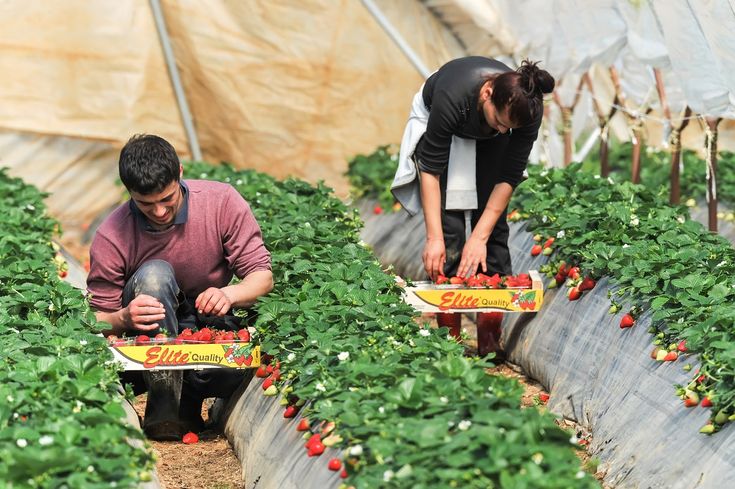The dream of experiencing life in a new country while earning a living is a powerful motivator for many. Fruit picker jobs abroad offer a tangible pathway to achieving this aspiration, particularly for individuals seeking entry-level opportunities that often require no formal education or extensive prior experience. These roles are the backbone of the global agricultural industry, ensuring that the fruits we enjoy reach our tables, and this essential function translates into consistent demand for dedicated workers across various regions. For those who might face limited employment prospects in their home countries, visa sponsorship programs become invaluable. These initiatives, often supported by governments and agricultural organizations, address seasonal labor shortages in countries like Australia, New Zealand, Canada, and several European nations, creating economic opportunities for international workers. The combination of a global interest in working abroad and the persistent need for agricultural labor presents a significant chance for individuals to find fruit picker jobs in welcoming countries, often with the added benefit of visa support.
Prime Destinations for Fruit Picking with Visa Sponsorship
Australia
Australia, often called the “Land of Sunshine,” boasts a thriving agricultural sector with a particularly long and varied fruit harvesting season. This creates numerous opportunities for seasonal fruit picking jobs. For younger individuals from eligible countries, the Working Holiday Visa (subclass 417 and 462) is a popular gateway, allowing them to combine work and travel for up to a year. Furthermore, this visa can often be extended for an additional year or even a third year by completing specified regional work, which includes fruit picking. Australia also operates the Seasonal Worker Programme, specifically designed for workers from participating Pacific Island countries and Timor-Leste. This program enables individuals to work in the agriculture sector for up to nine months at a time. This dual approach, catering to both younger travelers and workers from specific regions, makes Australia a highly accessible destination for those seeking sponsored visas for fruit picking. The Working Holiday Visa attracts those looking to finance their travels through work, while the Seasonal Worker Programme directly addresses critical agricultural labor shortages by partnering with specific nations.
New Zealand
New Zealand, renowned for its stunning landscapes, also relies heavily on seasonal workers in its horticulture and viticulture industries, especially during fruit harvesting periods. The primary visa facilitating this is the Recognised Seasonal Employer (RSE) Limited Visa. This visa permits individuals to work for approved employers within the fruit, vegetable, and grape-growing sectors for a limited duration, typically up to seven months. While eligibility for the RSE visa generally prioritizes citizens from specific Pacific nations, employers can, under certain circumstances and with prior agreement, recruit workers from other countries. The RSE scheme is a well-structured program that mandates participating employers to meet specific standards concerning worker welfare and wages, offering a degree of security for international fruit pickers. By channeling visa sponsorship through recognized employers, New Zealand aims to efficiently manage the influx of seasonal workers and provide them with a protected working environment.
Results
#1. What is your current employment status?
#2. Do you have a valid work permit or visa for Canada?
#3. Are you actively looking for a job in Canada?
#4. Are you open to dating someone who already lives in Canada?
#5. What type of job opportunity are you seeking?
#6. How many years of experience do you have in your field?
#7. Are you willing to relocate to any province in Canada?
#8. What’s your ideal relationship status while pursuing a job abroad?
#9. If offered a job and love opportunity in the same city, would you:
#10. What is your highest level of education?
Canada
Canada’s vast agricultural lands, particularly in provinces such as Ontario and British Columbia, experience significant seasonal demand for agricultural workers, especially during harvest times. The Temporary Foreign Worker Program (TFWP) provides avenues for fruit pickers through two main streams: the Seasonal Agricultural Worker Program (SAWP) and the Agricultural Stream. The SAWP is exclusively for citizens of Mexico and participating Caribbean countries, with recruitment processes managed by their respective governments. The Agricultural Stream has a broader scope and can include workers from any country. This stream often requires the Canadian employer to obtain a Labour Market Impact Assessment (LMIA), which demonstrates that hiring a foreign worker will not negatively impact the Canadian labor market. Canada’s TFWP, with its two distinct streams, offers pathways for a diverse group of international workers to contribute to its agricultural sector. The SAWP provides a more streamlined process for workers from specific countries with established agreements. This dual-stream strategy allows Canada to meet its labor needs while also considering its international commitments and the conditions of its domestic workforce.
Europe
Several European countries also present seasonal opportunities for agricultural workers, including fruit pickers, although the specifics of visa sponsorship can vary. Spain, with its extensive fruit cultivation in regions like Valencia and Andalusia, particularly needs workers for harvesting citrus fruits and grapes. For individuals from outside the European Union (EU) and the European Economic Area (EEA), obtaining a work permit sponsored by a Spanish employer is generally necessary, and the Seasonal Worker visa is a relevant option to explore. Italy offers a range of fruit harvesting jobs across its diverse agricultural landscape, from oranges and olives in the southern regions to grapes in Tuscany. Similar to Spain, non-EU citizens typically require employer-sponsored work permits, with a specific Seasonal Work Visa available for temporary agricultural work. Germany experiences seasonal demand for harvesters, particularly for fruits like apples and berries, especially in its northern regions. While the EU Blue Card is geared towards highly skilled professionals, other visa options might exist for seasonal agricultural labor, and programs like the Fruit Harvest Helper Program have been mentioned. Having basic German language skills can be advantageous when seeking employment in Germany. The United Kingdom has a need for fruit pickers, especially for soft fruits such as strawberries and berries in areas like Kent and Scotland. The Seasonal Worker Visa for horticulture allows individuals to work for a period of up to six months. Additionally, the Youth Mobility Scheme offers another route for young citizens from participating countries to work in the UK, including in agricultural roles. While European countries offer fruit picking opportunities, the landscape of visa sponsorship is more varied and often necessitates direct engagement with potential employers and a thorough understanding of each country’s specific immigration regulations. The EU’s principle of free movement applies to its citizens, meaning visa sponsorship is primarily relevant for non-EU nationals, and each member state has its own specific policies for seasonal workers.
Other Destinations
Beyond these prime destinations, other countries also offer opportunities. The United States, for example, utilizes the H-2A visa program to bring in temporary agricultural workers, including fruit pickers, and has a broad list of eligible countries. Luxembourg, although less frequently highlighted, also presents possibilities within its agricultural sector. The global need for seasonal agricultural labor is indeed widespread, extending beyond the most commonly discussed destinations.
The Fruits of Your Labor: Seasonal Harvest Schedules Around the Globe
Australia
In Australia, the fruit picking season generally begins in December and extends through May, though specific timings can vary due to weather patterns. Queensland sees mangoes, lychees, avocados, and bananas harvested from November to February in the Mareeba region, while stone fruits like plums and peaches are picked in Stanthorpe during the same period. New South Wales has a busy harvest period from November to April, peaking in February, with stone fruits around Young in January to March, grapes in Leeton and the Hunter Valley in February to March, and apples in Orange from February to April. Victoria’s main fruit and vegetable picking season runs from November to April, with a peak in February, featuring grapes in the Ovens, King, and Kiewa Valleys from February to April and apples in the Buckland Valley and Stanley areas in March to April. Tasmania harvests grapes in the Huon and Tamar Valleys from February to April and apples in the Hunter Valley and Tasman Peninsula from March to May. South Australia picks grapes in the Southern Vales and Barossa Valley from February to April and apples and pears in the Adelaide Hills during the same period. Western Australia sees grape harvesting in the Margaret River and Swan Valley from January to March, and apples and pears in Pemberton, Donnybrook, and Manjimup from March to May. The Northern Territory harvests melons from March to October and mangoes in October and November around Katherine and Darwin.
New Zealand
New Zealand’s busiest fruit picking months are typically December through April, encompassing the summer and early autumn. On the North Island, Hawke’s Bay is a key region for grapes, apples, pears, stone fruit, and vegetables, with peak work in February, March, April, May, June, November, and December. The Bay of Plenty is known for kiwifruit and avocados, with high demand for workers from April to August and also in November and December. Northland produces avocados, citrus, and olives, with the best chances for work in late autumn and early winter. The Waikato region harvests blueberries, onions, potatoes, and asparagus, with peak demand in January and February. On the South Island, Marlborough is famous for wine grapes, with the busiest period from December to August. Nelson is a significant apple-growing region, also producing blackcurrants, raspberries, pears, and boysenberries, with peak demand from March to May. Otago is known for summer fruits, apples, and wine grapes, with high demand from September to November and especially from March to May.
Canada
In Canada, harvest times vary by region and fruit. In Ontario, apples are available year-round, with field strawberries in April to June and again in the fall, blueberries in July to September, cherries in July and August, peaches in July to September, and grapes in August and September. In British Columbia, particularly around Kelowna, cherries are harvested from early July to early August, peaches from late July to early September, plums from mid-August to late September, apricots in mid-July to mid-August, pears from mid-August to late September, and apples from mid-August to late October.
Europe
In Europe, the harvest seasons also differ by country and fruit. In the UK, strawberries are typically harvested from May to September, raspberries from June to October, cherries in June and July, and apples from August to October. Spain sees apricots in season from May to August, cherries from May to July, grapes from September to December, peaches from May to September, and plums from June to August. Italy harvests peaches and nectarines from May to September, plums from July to September, apricots from May to August, strawberries in May and June, apples from August to October, and pears from August to December. Germany harvests apples from mid-September to mid-November, and berries are typically picked in the summer months.
The differing harvest seasons across these major destinations present a valuable opportunity for individuals seeking continuous employment. By understanding the peak harvest times for various fruits in these countries, a worker could potentially plan their work locations strategically throughout the year. For instance, someone could work the summer fruit season in the Northern Hemisphere and then transition to the Southern Hemisphere for their summer harvest, potentially leading to a more stable income stream.
Securing Your Spot: Navigating Visa Sponsorship for Fruit Picker Jobs
The process of obtaining visa sponsorship for fruit picker jobs varies depending on the destination country.
Australia
In Australia, prospective workers from eligible countries for the Working Holiday Visa should apply through the official Department of Home Affairs website. This typically involves meeting age requirements (usually 18-30 or 18-35 for some countries), having a valid passport, and demonstrating sufficient funds. For the Seasonal Worker Programme, employers in Australia must be approved sponsors and recruit workers from participating countries.
New Zealand
In New Zealand, individuals interested in the Recognised Seasonal Employer (RSE) Limited Visa must have a job offer from a Recognised Seasonal Employer before applying. A list of these employers is available on the Immigration New Zealand website. Applicants typically need to provide proof of identity, a job offer, evidence of good health and character (including police certificates), and proof of sufficient funds or a guarantee of support from their employer.
Canada
For Canada, those seeking fruit picking jobs under the Seasonal Agricultural Worker Program (SAWP) must be citizens of Mexico or participating Caribbean countries and are usually recruited through their government. For the Agricultural Stream of the Temporary Foreign Worker Program (TFWP), employers generally need to obtain a Labour Market Impact Assessment (LMIA) from Employment and Social Development Canada before a foreign worker can apply for a work permit. Applicants then apply for a work permit through the Immigration, Refugees and Citizenship Canada (IRCC) website.
Europe
In Europe, the process varies. For Spain, non-EU/EEA nationals typically need a job offer from a Spanish employer who will sponsor their work permit. The employer usually initiates the process by applying for a work permit on behalf of the applicant. Once approved, the applicant can then apply for the corresponding visa at the Spanish consulate or embassy in their home country. Italy follows a similar procedure for non-EU citizens, requiring a job offer and a work permit (nulla osta) obtained by the employer through the local immigration office (Sportello Unico per l’Immigrazione) before the worker can apply for a work visa. Germany generally requires a job offer and for the employer to initiate the visa process, often involving approval from the Federal Employment Agency (Bundesagentur für Arbeit). For the UK’s Seasonal Worker Visa, applicants need a certificate of sponsorship from a UK-approved sponsor and must demonstrate they have sufficient funds to support themselves.
Essential documents commonly required across these destinations include a valid passport, an updated CV highlighting any relevant experience, and often a cover letter expressing interest in the specific role and country. Proof of sufficient funds might be needed to show the ability to support oneself upon arrival. Medical examinations and health certificates are often required as part of the visa application process. Police clearance certificates from countries where the applicant has lived for a significant period are also typically necessary. Securing a formal job offer from an employer willing to sponsor the visa is often the most critical step. Applications are usually submitted online through official government portals or employer websites. Be prepared for potential interviews, which may be conducted virtually. While the specific documentation and procedures differ by country, the fundamental steps of obtaining a job offer and meeting health and character requirements are consistent themes across various visa sponsorship programs. Employers and immigration authorities need to ensure that international workers have a genuine job offer, are healthy enough to perform the work, and do not pose a security risk.
What to Expect: Salary and Working Conditions for Fruit Pickers
Salary levels for fruit pickers vary significantly across different countries. In Australia, the average fruit picker salary is around $57,956 AUD per year, or $29.72 AUD per hour, with entry-level positions starting at approximately $52,000 AUD per year and more experienced workers earning up to $73,150 AUD. However, some sources indicate hourly rates can range from $24 to $40 AUD. In New Zealand, fruit pickers typically earn between $18 to $22 NZD per hour, with an average of around $22.04 NZD per hour. This can translate to an average annual gross salary of about $48,151 NZD. In Canada, the average fruit picker salary is around $30,069 CAD per year, or $15.42 CAD per hour, with some sources suggesting a range of $15 to $20 CAD per hour. In the UK, the average fruit picker salary is £22,984 per year, or £11.79 per hour, with entry-level positions starting slightly lower and experienced workers earning more. In Spain, the average salary for a fruit picker is around €15,870 EUR per year, or about €8 EUR per hour. In Germany, fruit pickers typically earn an hourly rate ranging from €9 to €12 EUR, which could amount to an average annual salary of around €21,822 EUR for harvest workers.
Accommodation arrangements for fruit pickers can vary. On-farm accommodation is sometimes provided, ranging from basic shared rooms to more comfortable setups. Shared housing in nearby towns is also common, particularly for working holidaymakers. In Canada, employers under the TFWP are often required to provide decent and affordable housing for foreign agricultural workers. Some employers might deduct accommodation costs from wages. In some instances, free accommodation or housing allowances are offered as benefits, as seen in some fruit packing jobs in Germany. Accommodation arrangements can significantly impact a fruit picker’s overall experience and financial well-being, making it an important aspect to consider when evaluating job offers.
The work of a fruit picker is typically physically demanding, involving prolonged periods of standing, bending, and lifting heavy containers of fruit. The work is usually performed outdoors, exposing workers to various weather conditions, including heat, cold, and rain. Working hours can be long, especially during peak harvest seasons, and may include early starts and weekend work to meet harvest targets. The pace of work can be fast. Some roles might also involve the basic operation of farm machinery or equipment. Prospective fruit pickers should be prepared for these physically demanding working conditions.
While often considered unskilled labor, fruit pickers are entitled to certain rights and protections. In countries like Australia and the UK, employers are legally required to pay at least the minimum wage and adhere to labor laws concerning working hours and conditions. New Zealand’s RSE scheme also has minimum wage provisions. Canada’s TFWP offers benefits such as transportation assistance, health insurance coverage, and affordable housing. Some employers might offer additional benefits like overtime pay or access to fresh produce. It is crucial for international workers to understand their rights in the destination country and know where to seek assistance if needed.
Job and Salary Expectations in Canada (CAD)
Here are the tables categorizing the provided jobs with estimated salary expectations in CAD:
Submit Your Applications
Table 1: Unskilled Work in Canada
| Dishwasher Jobs in Canada | $14 – $18 per hour |
| Delivery Driver Jobs in Canada | $16 – $22 per hour |
| Factory Jobs in Canada | $15 – $21 per hour |
| Housekeeping Jobs in Canada | $15 – $20 per hour |
| Cleaner Jobs in Canada | $15 – $20 per hour |
| Cashier Jobs in Canada | $14 – $18 per hour |
| Security Guard Jobs in Canada | $16 – $23 per hour |
| Barber Jobs in Canada | $17 – $25 per hour |
| Immigrant Jobs in Canada 2025 (General Entry-Level) | $15 – $22 per hour |
Table 2: Skilled Work in Canada
| Job Title | Salary Expectations (CAD) |
|---|---|
| Cook Jobs in Canada | $17 – $28 per hour |
| Civil Engineer | $60,000 – $100,000+ per year |
| Accountant Jobs | $50,000 – $90,000+ per year |
Expanding Your Horizons: Related Agricultural Jobs Offering Visa Sponsorship
Beyond fruit picking, there are several related agricultural jobs that may also offer visa sponsorship opportunities. Farmhands are often needed to perform a variety of tasks, including general farm maintenance, assisting with livestock, operating basic machinery, and helping with planting and harvesting. Opportunities also exist in sorting and packing produce, which involves inspecting fruits and vegetables for quality, sorting them by size and grade, and packing them into containers for distribution. These roles can sometimes be less physically demanding than the actual picking. Other agricultural laborer roles might include tasks like weeding, thinning crops, cleaning farm facilities, and assisting with irrigation. There is also a demand for machine operators who can operate tractors, harvesters, and other specialized agricultural equipment. These positions often require specific licenses or training. Exploring these related agricultural jobs can broaden the scope of opportunities for individuals seeking visa sponsorship and might better suit their skills or preferences.
Conclusion
Fruit picker jobs abroad with visa sponsorship present exciting possibilities for individuals seeking international work experience and a change of scenery. The key destinations of Australia, New Zealand, Canada, and various European countries each offer unique opportunities and specific requirements for those looking to participate in their vital agricultural sectors. Thorough research into the visa processes, seasonal harvest schedules, salary expectations, and working conditions for your chosen destination is essential for a successful journey. By utilizing the resources provided and diligently navigating the application process, you can take the first step towards a rewarding international fruit picking adventure.






